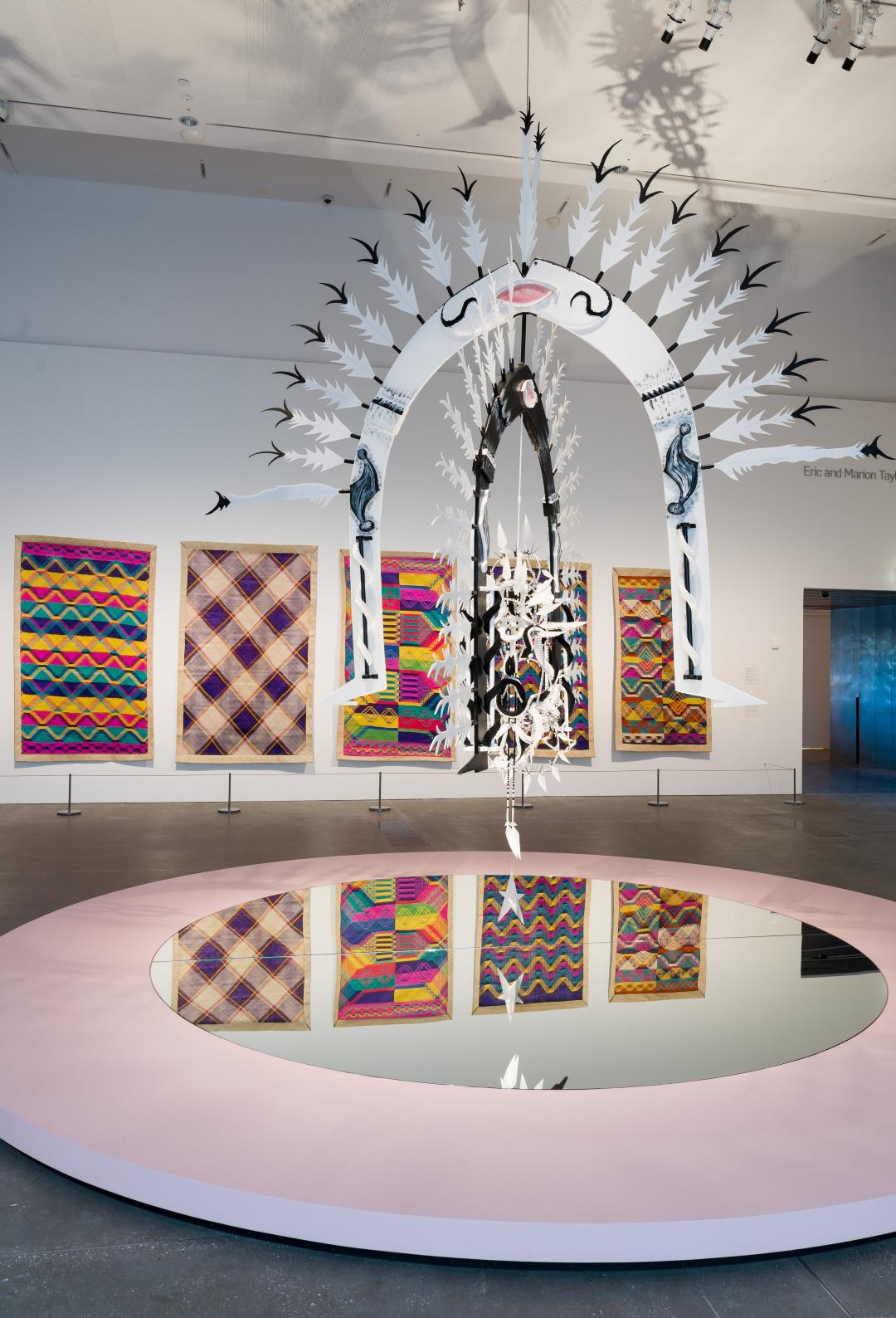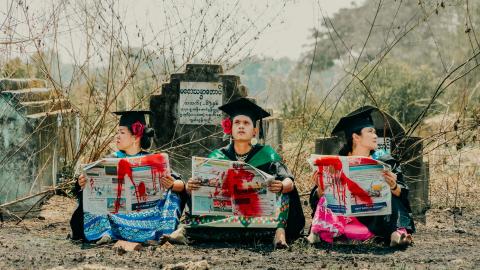Bajau Sama Dilaut Weavers
APT10
Kak Budi
Bajau Laminusa people
Sulu/Celebes Seas, c.1983
Kak Kinnuhong
Bajau Sama Dilaut people
Sulu/Celebes Seas, c.1973
Makcik Lukkop
Bajau Sama Dilaut people
Sulu/Celebes Seas, c.1951
Kak Sanah Belasani
Bajau Sama Dilaut people
Sulu/Celebes Seas, c.1979
Kak Rahima
Bajau Sama Dilaut people
Sulu/Celebes Seas, c.1966
Live and work in Semporna, Sabah, Malaysia
The boldly coloured tepo (mats) of the women of the Bajau Sama Dilaut community, based on the islands of Semporna off the east coast of Sabah in Malaysian Borneo, combine motifs passed down through generations with geometric forms and imagery drawn from the communities’ maritime setting. The Bajau people are an Austronesian ethnic group known for their nomadic, seafaring lifestyles, living throughout the Indo-Malay and Philippine archipelagos. The Sama Dilaut community in Semporna lives in tidal stilt villages and their economy centres largely on fishing.
This lifestyle features prominently in the designs of their finely woven pandanus mats, incorporating undulating waves, intricate textile patterns, and rhythms, textures and structures drawn from everyday life. Their chromatic range is particularly striking, with high-key pink, yellows and aquamarine set against deep greens and indigos. The tepo are not simply beautiful objects, but also expressions of the collective life embedded in them.

Bajau Sama Dilaut Weavers / Installation view with work by Grace Lillian Lee and Ken Thaiday Snr (foreground), GOMA, November 2021 / Kain Pelikat (Corak sarung nenek moyang (Pattern of ancestor sarongs) 2021 and Nekiutan (Corak udang / Lobster prawn pattern) 2018 / Woven pandanus, commercial chemical dye / Installed dimensions vary / Purchased 2021. QAGOMA Foundation; and Harunan Motol (Tangga Perahu) (Boat Ladder) 2019; Tinatak lantai bebunga (House and lepa floor planks) 2018; Binatok Lantai (Corak binatak papan lantai (Floorboard animal pattern) 2021 / Woven pandanus, commercial chemical dye / Installed dimensions vary / Purchased 2021. QAGOMA Foundation / © The artists / Photograph: Natasha Harth, QAGOMA






